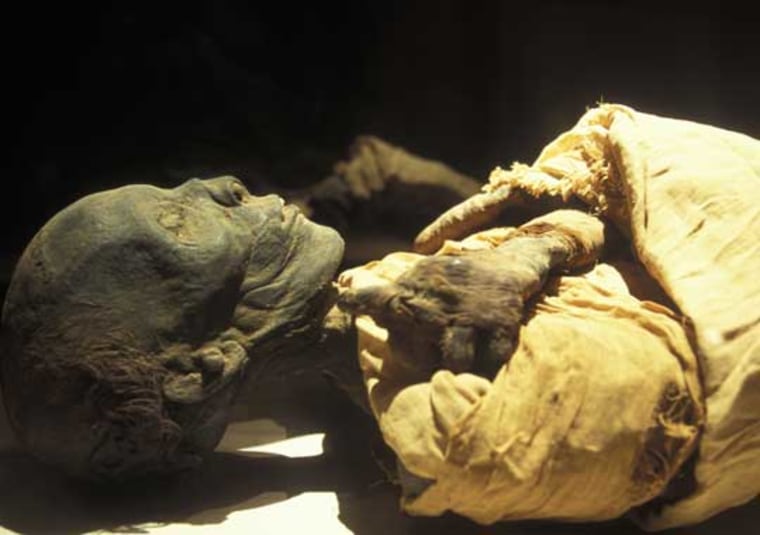Swiss researchers have succeeded in mummifying a body part using the salty recipe of the ancient Egyptians.
The experiment, which has been running for more than four months, takes inspiration from a 1994 study by Ronald Wade, director of Maryland's State Anatomical Board, and Bob Brier, one of the leading experts on mummies and Egyptology.
During that study, Brier and Wade replicated for the first time Egyptian mummification using the tools and procedures of the ancient embalmers.
"We are trying to improve on that important experiment using the most up-to-date methods, such as radiological technology, magnetic resonance imaging and computer tomography. It's a unique project, the first of its kind," Swiss anatomist and paleopathologist Frank Ruhli told Discovery News.
While Brier and Wade used a complete male body, Ruhli, head of the Swiss Mummy Project at the University of Zurich, used two legs which were severed from a female donor body.
One leg was used in a control study and placed in an oven at 40 degrees Celsius (104 degrees Fahrenheit) with low humidity to reproduce natural mummification as it occurred in the Egyptian desert.
The other leg was placed on an embalming pine board and covered with natron, a white, salt-like substance used by the Egyptians to dry out the corpse.
A blend of four sodium compounds, natron, was the key ingredient in the ancient Egyptian mummification process, which required the removal all internal organs except the heart through a four-inch incision on the body's left side.
After the brain was extracted through the nose, packets of natron were placed in the previously washed body cavity, and finally natron was heaped over the corpse. The salt-like substance was also applied to dry out the removed internal organs, which were then placed in jars.
Protecting bodies from decay and preserving them in a recognizable form was extremely important for the ancient Egyptians, who believed that people needed their bodies in the afterlife.
Bodies were embalmed as early as 2613 to 2494 B.C., under the pharaohs of the 4th dynasty. However,as early as 5000 B.C., bodies were preserved by burying them in the heat and dryness of the desert sand.
The most effective techniques were used between 1567 and 1200 B.C. Linen wrappings were treated with plant oils, resins and other organic substances in order to provide an antibacterial and impermeable coating against the humidity of underground tombs.
However, natron remained the most important ingredient in the mummification process.
"Our experiment demonstrated that it is indeed possible to mummify a human using natron. Actually, you would need a lot of it. There is no doubt that the natron industry was a large one in ancient Egypt," Brier told Discovery News.
For the 1994 experiment, some 273 kilograms (601 pounds) of natron were used. Ruhli has used some 60 kg (132 pounds) just for the leg. Surprisingly, natron dehydration in the Swiss lab took longer than the 30 to 40 days reported by Greek historian Herodotus and other ancient writers.
"After three months, magnetic resonance imaging showed that the leg still has pockets of humidity," Ruhli said.
However, the leg already appeared like that of an ancient mummy, suggesting that not only time, but also natron cause a mummy to look the way it does.
"The leg is stiff, especially the feet area rather than the thigh area," Ruhli said.
As for the control leg, it failed to dehydrate and started to decompose after a week.
Unlike his US colleagues, Ruhli does not plan to follow the natron dehydration with linen wrapping.
"Wrapping does not improve mummification, but preservation, which is not an issue for our experiment. Rather we possibly may re-soak the leg in water to see how much original morphology can be regained," Ruhli said.
One of the goals of the Swiss mummy expert is to find out how much the mummification process damages the DNA.
Brier, who at the moment is working on a similar project with his mummies, found Ruhli's experiment very interesting.
"It is a very important project. Using the latest technologies for moment-by-moment analysis certainly adds to our knowledge on the ancient mummification process," Brier said.
An earlier version of this report included an inaccurate conversion from Celsius to Fahrenheit temperature.
